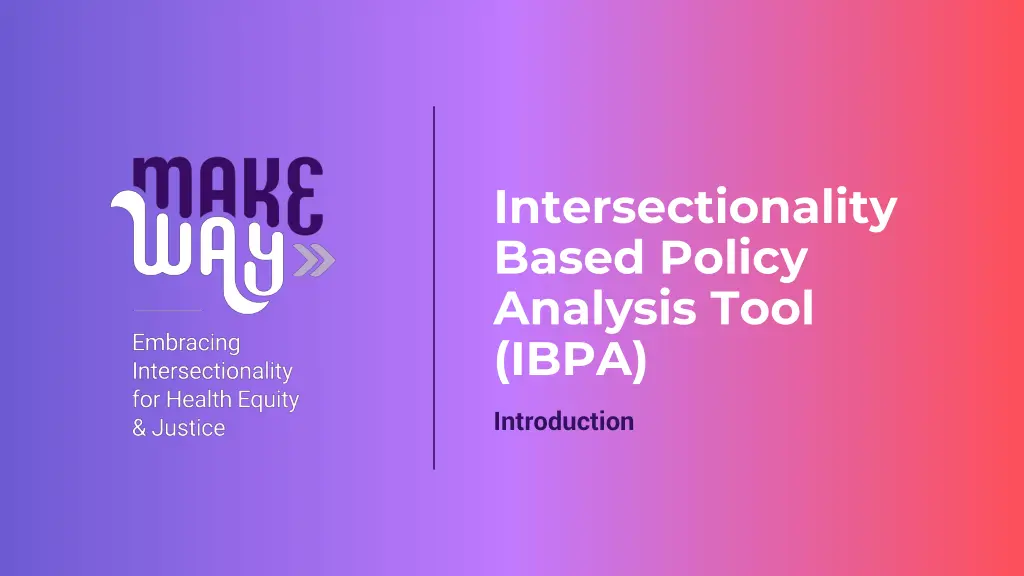
Intersectionality-Based Policy Analysis Tool (IBPA) Overview
Explore the Intersectionality-Based Policy Analysis Tool (IBPA) that provides a roadmap for policy analysis and focuses on humanizing policies, exposing power imbalances, and framing solutions. Learn how to use the IBPA effectively and discover the essential questions to ask during the policy analysis process.
Download Presentation

Please find below an Image/Link to download the presentation.
The content on the website is provided AS IS for your information and personal use only. It may not be sold, licensed, or shared on other websites without obtaining consent from the author. If you encounter any issues during the download, it is possible that the publisher has removed the file from their server.
You are allowed to download the files provided on this website for personal or commercial use, subject to the condition that they are used lawfully. All files are the property of their respective owners.
The content on the website is provided AS IS for your information and personal use only. It may not be sold, licensed, or shared on other websites without obtaining consent from the author.
E N D
Presentation Transcript
Intersectionality Based Policy Analysis Tool (IBPA) Introduction
OBJECTIVES Provides a roadmap for the policy analysis process. 1. Roadmap 2. Humanise 3. Expose 4. Framing
OBJECTIVES 1. Roadmap 2. Humanise Humanises policies and the policy- making process. 3. Expose 4. Framing
OBJECTIVES 1. Roadmap 2. Humanise Exposes power imbalances. 3. Expose 4. Framing
OBJECTIVES 1. Roadmap 2. Humanise 3. Expose Interrogates how problems and solutions are framed. 4. Framing
HOW TO USE THE IBPA? 01 02 03 Homework Investigate the policy and all its drama Familiarisation Get to know the questions Build your team Involve those impacted by the policy 04 05 Analysis Answer the questions Write up Put your analysis together
IBPA questions 36 questions - 8 categories People/identities the policy addresses Monitoring Evaluation Learning What is the policy about Perspectives the policy is based on 4 5 3 8 7 2 6 1 Policy's ecosystem Unpacking the policy development process Accountability How it operates
SAMPLE QUESTION (1) What is the policy about? What is the purpose of this policy and why is it necessary according to those who developed it and according to those who promoted it?
SAMPLE QUESTION (2) Unpacking the policy development process Was the policy generated in collaboration with the people it addresses? Were grassroots activists and community groups represented?
SAMPLE QUESTION (3) People and characteristics or identities the policy addresses Who benefits if the policy is implemented? The group the policy addresses directly? Who else? Will anyone indirectly benefit? Could some people stand to benefit from it while the policy does not recognise them/take them into account? Could anyone be directly harmed by this policy? Could anyone be harmed indirectly? Have these groups been identified or considered?
